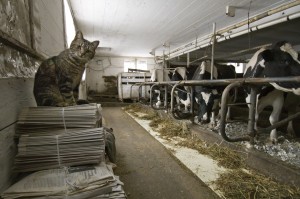The fourth of July holiday has given me some time to ponder the last few workshops I’ve taught and think about what I have learned. Yes, I learn something on every workshop I teach- sometimes it is a better way to teach something or a better way to demonstrate a technique- but often my students tell me what they need to know and teach me how to get the points across. Case in point: autofocus.
Like many things, autofocus is easy to do but hard to master. Everyone who gets a camera quickly figures out that the little box (or oval or bracket) in the viewfinder is the autofocus sensor and wherever the box is the camera will focus on that point. They also figure out that on most higher end cameras that little box can be moved around in the viewfinder (okay, the box doesn’t really move, other boxes in different places can be activated but it looks like the box moves so let it go).
For subjects that are stationary like portraits, flowers, landscapes, macro and interiors moving the autofocus box to the appropriate place and getting an image that is in focus is a straight forward process, assuming the depth of field is correct. But with moving subjects such as wildlife, pets, kids, parades and family gatherings this straight forward process seems to break down. I know this from looking at thousands of miss-focused images of moving subjects during critiques.
What most people seem to do when photographing something moving is to activate the center autofocus box and then compose the picture with the subject dead center. To get a better composition they then crop the picture in the computer so the subject is off-center. While this technique works it is not good photography technique and it hurts the quality and usefulness of the resulting image.
The proper technique is to place the subject compositionally where you want it in your viewfinder and then move the autofocus box to the subject (not the subject to the autofocus box). This is an important point- only your composition should determine where you want the focus to be. The focus should never determine what your composition should be or where you want the subject. In other words, compose first, focus second.
The problem many people have is that they have been told they should use the little autofocus activation button on the back of their camera to autofocus and not use the shutter pushed half way down technique. I couldn’t disagree with this more.
Think about how you hold your camera with your right hand- your index finger is on the shutter and your thumb is on the back of your camera where the little autofocus button is. But so is the toggle or wheel used to move the autofocus box. If you use the autofocus activation button with a moving subject your thumb has to not only keep popping the button but it also has to move the box around as the composition merits. It can’t do both well so you either sacrifice your composition for focus and put the animal in the center of the frame or you miss focus with the animal where you want it to be.
I use the shutter partly depressed to activate the autofocus. This leaves my thumb to only move the autofocus box around. Two fingers, two jobs; pretty easy.
So why, do you ask, do I feel the need to be able to move around the autofocus box so much? It is because the action of the subject dictates the composition. Lets say the subject you want to photograph is moving right. I will place it on the left in the viewfinder to give it space to move into compositionally. I will, of course, use the left autofocus box and place it on the subject. But if the subject stops and looks over his shoulder then I will move the subject to the right side of my viewfinder to give his gaze space to fall to the left. I will then move the autofocus box to the right side of my viewfinder on the subject. If he then resumes walking to the right, back he goes to the left side of the composition and back I go to using the left autofocus box.
So the movement and the action of the subject determines my composition and thus determines where my autofocus point should be and since the movement and action is forever changing my autofocus point is forever changing.
The secret to get compelling images with moving subjects is to allow compositional space for movement and gaze otherwise the animal looks cramped or awkward or uncomfortable. There are times when breaking this rule works very well but a vast majority of the time space for movement and gaze is compositionally essential.
With my thumb poised on the toggle that moves the box around in my viewfinder I can quickly capture these often short lived but very compelling compositions. This is why I am always moving my autofocus box around in my viewfinder. To get the best possible composition with an ever changing situation (moving subject means ever different backgrounds and ever different gesture and posture) you have to be ever ready to move your autofocus box. The only way to do this well is to have a finger dedicated to this and nothing else. Two fingers, two jobs; pretty easy!





